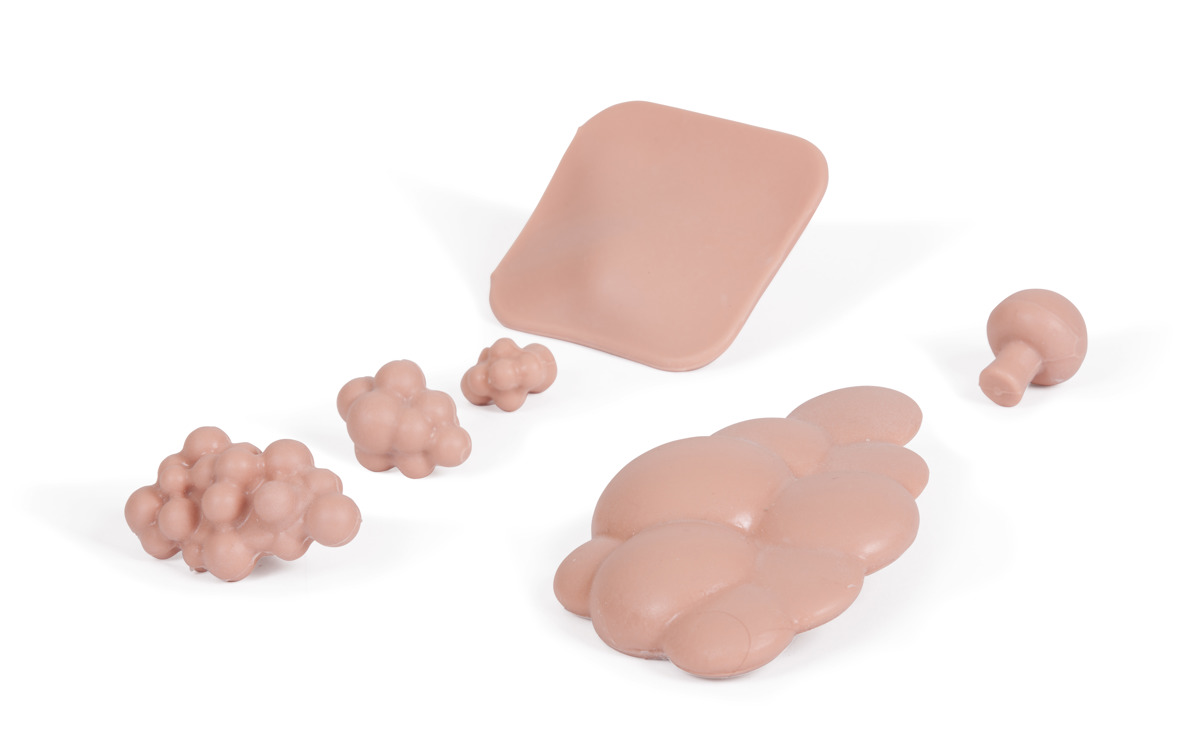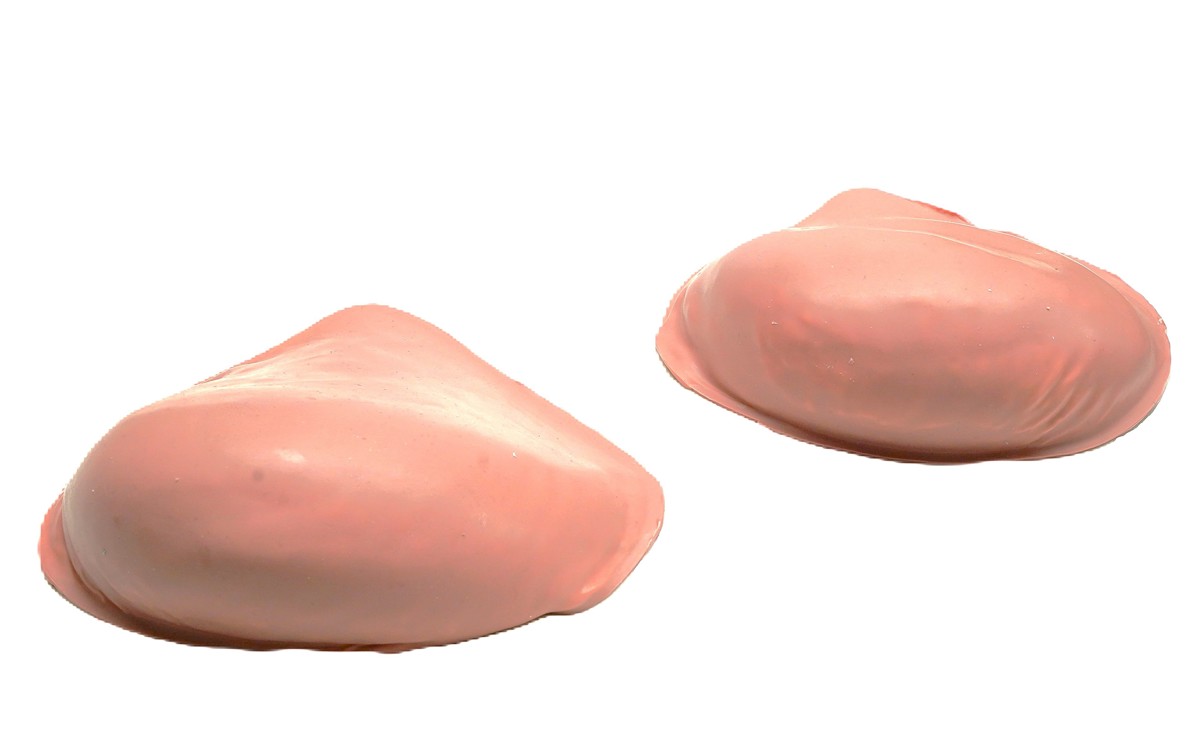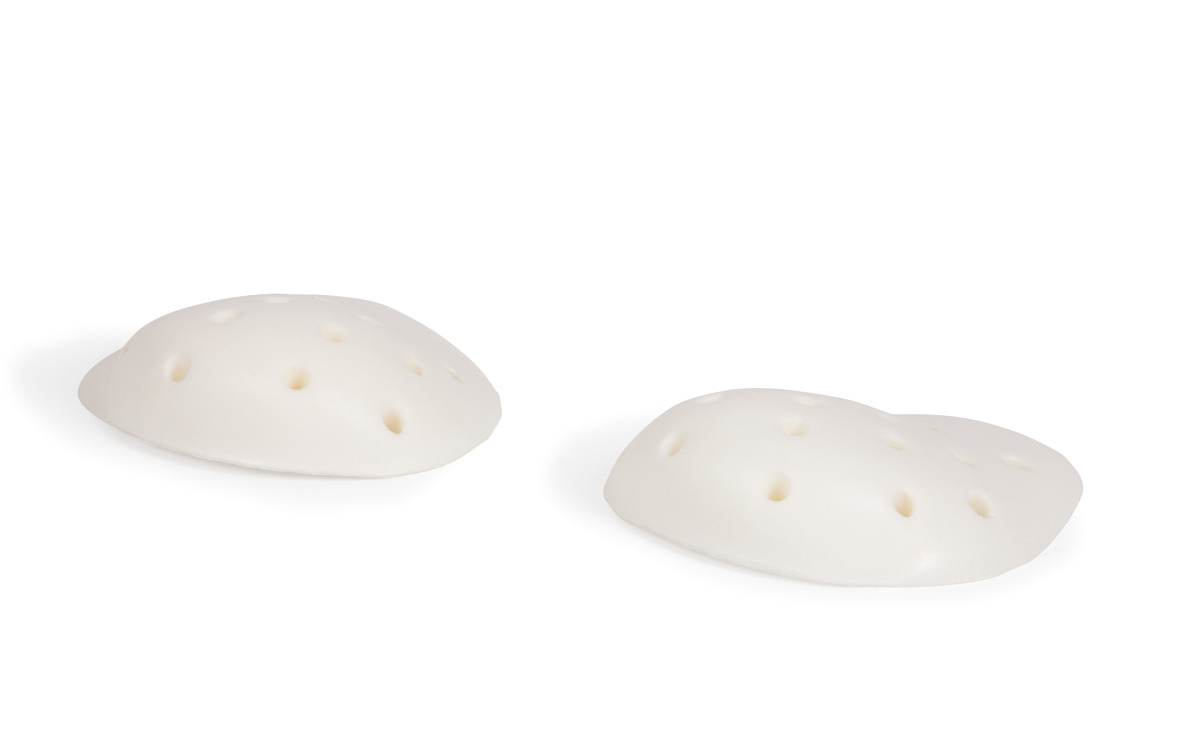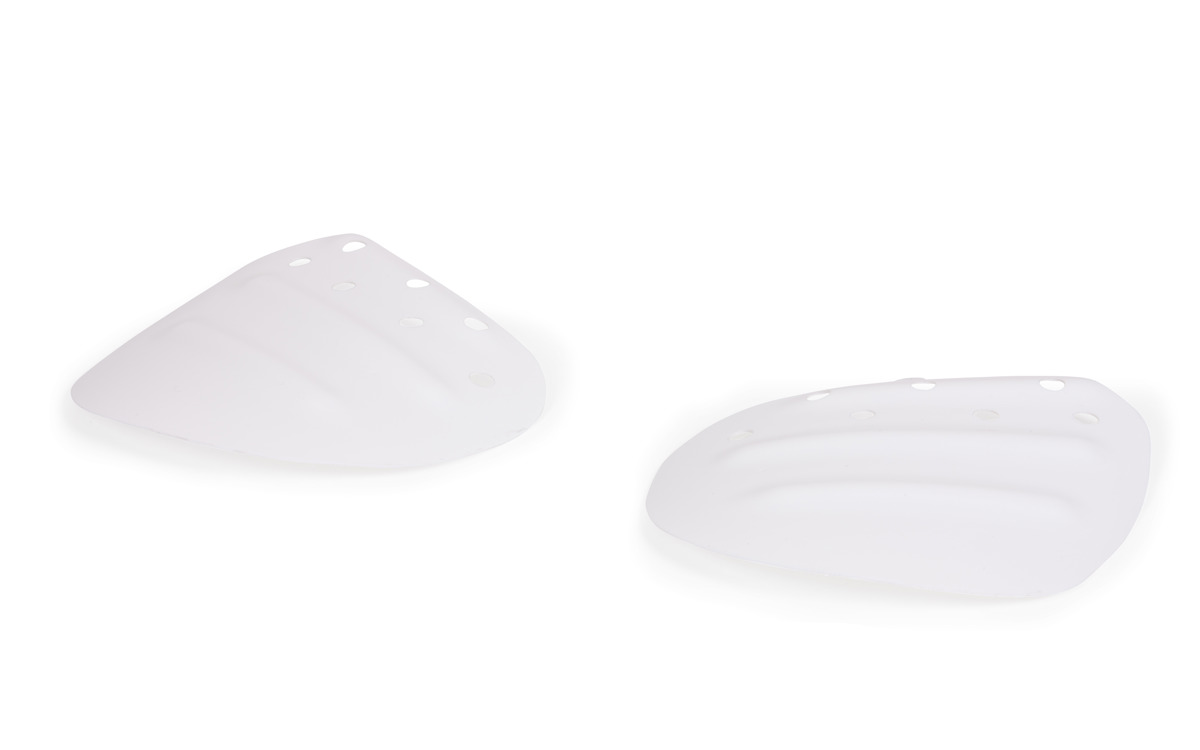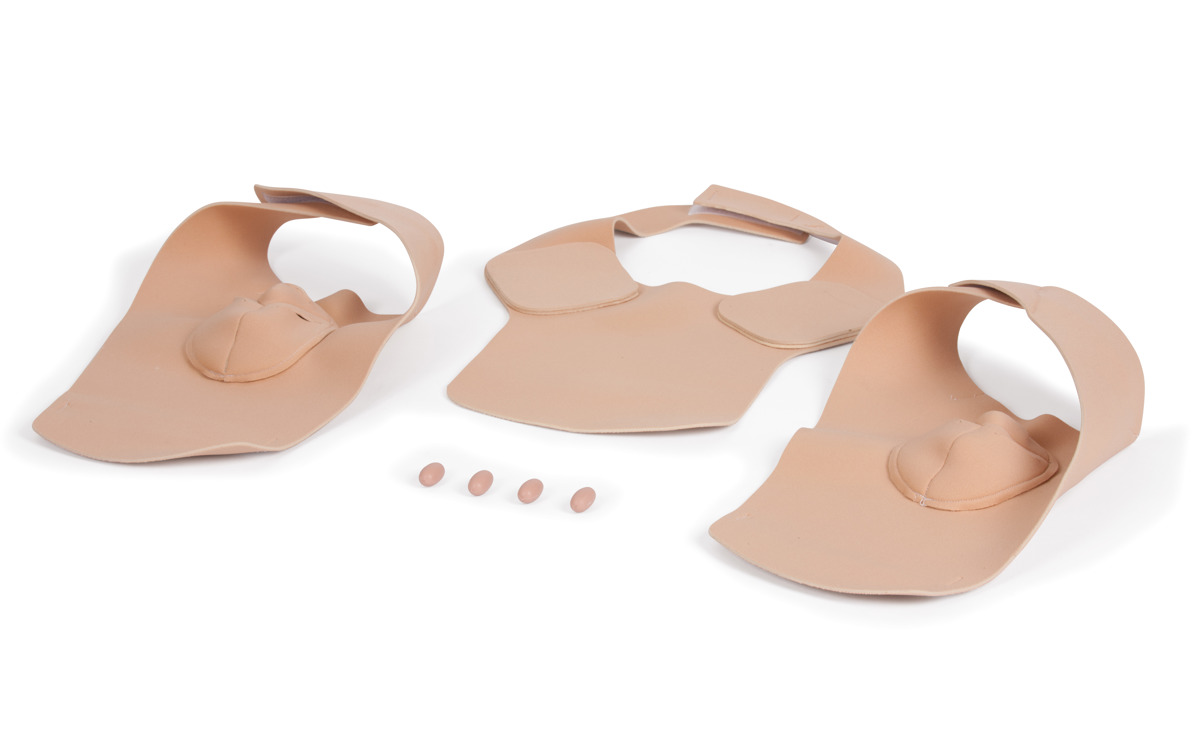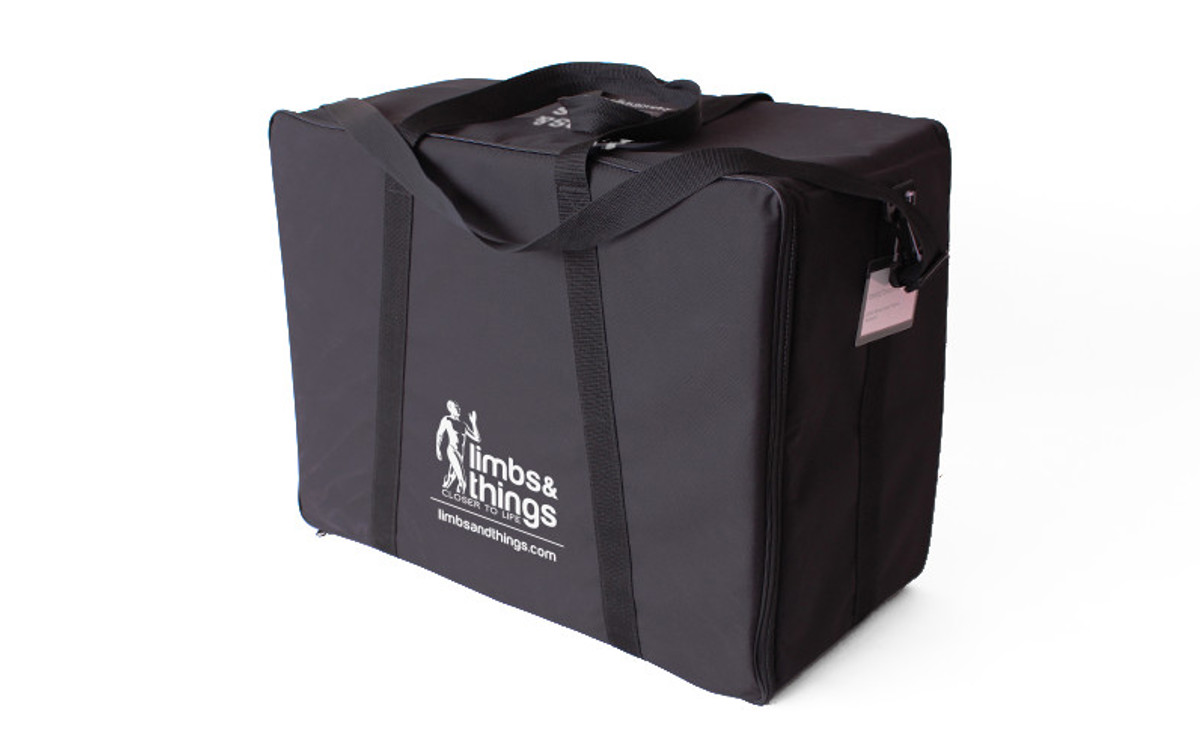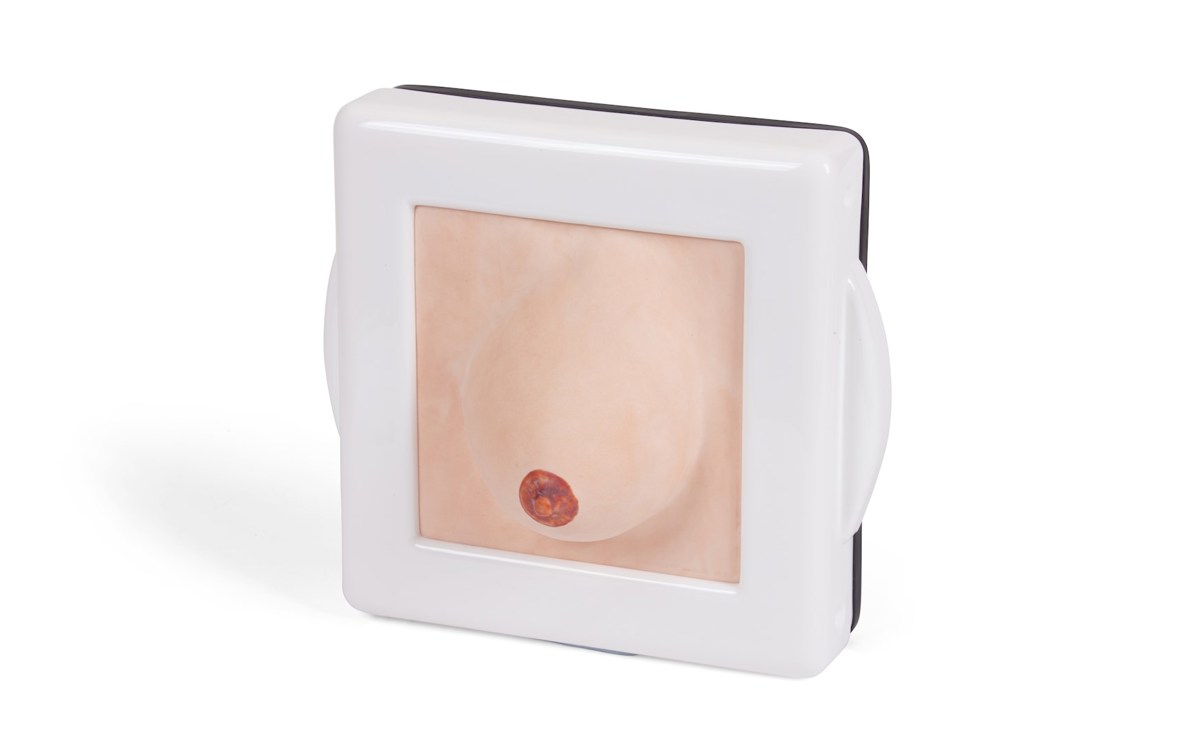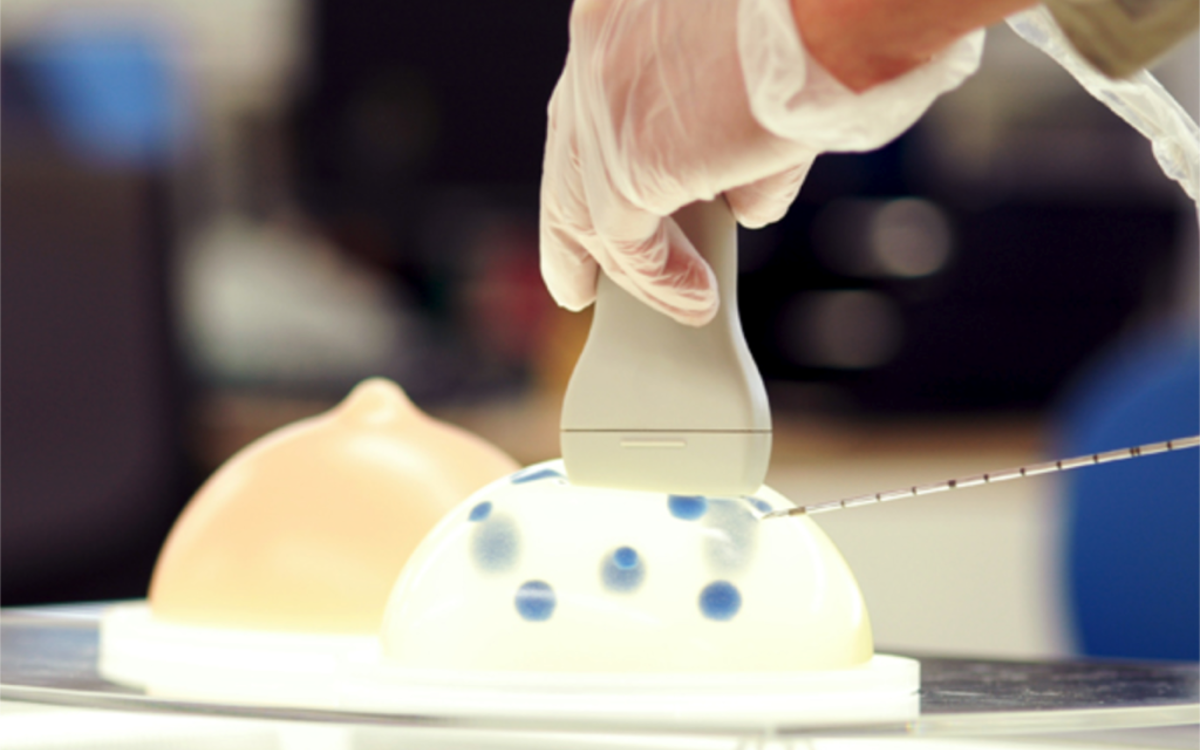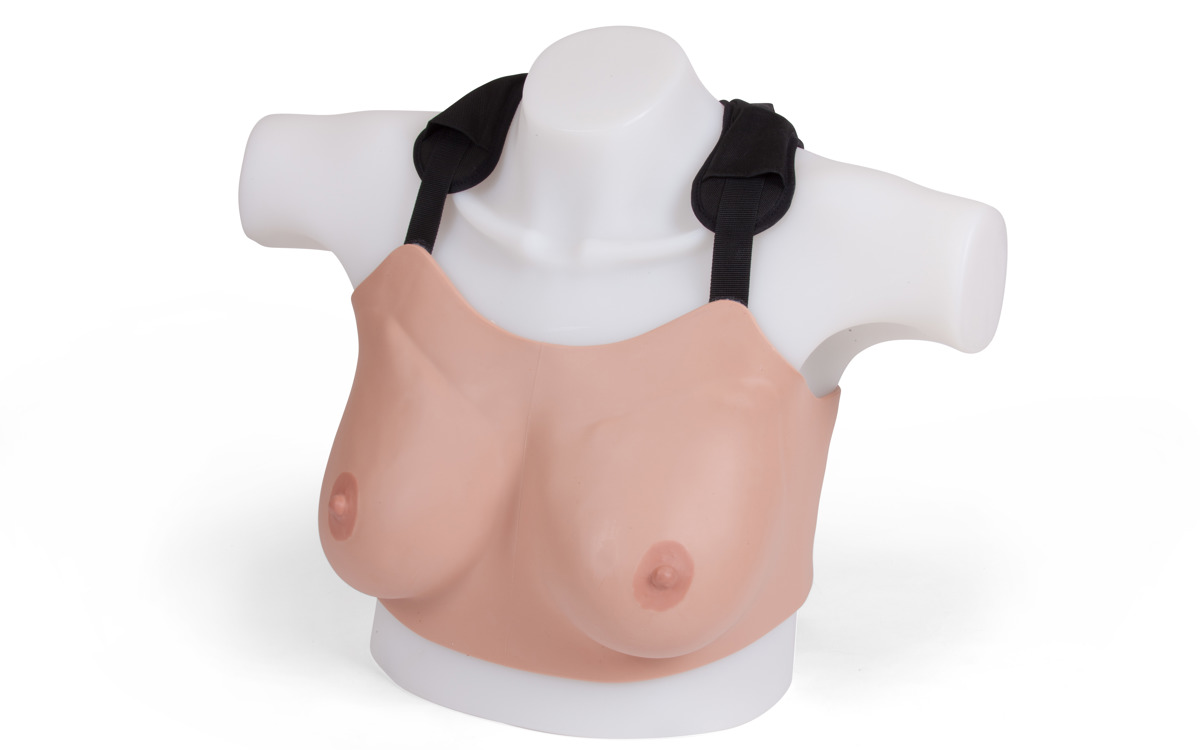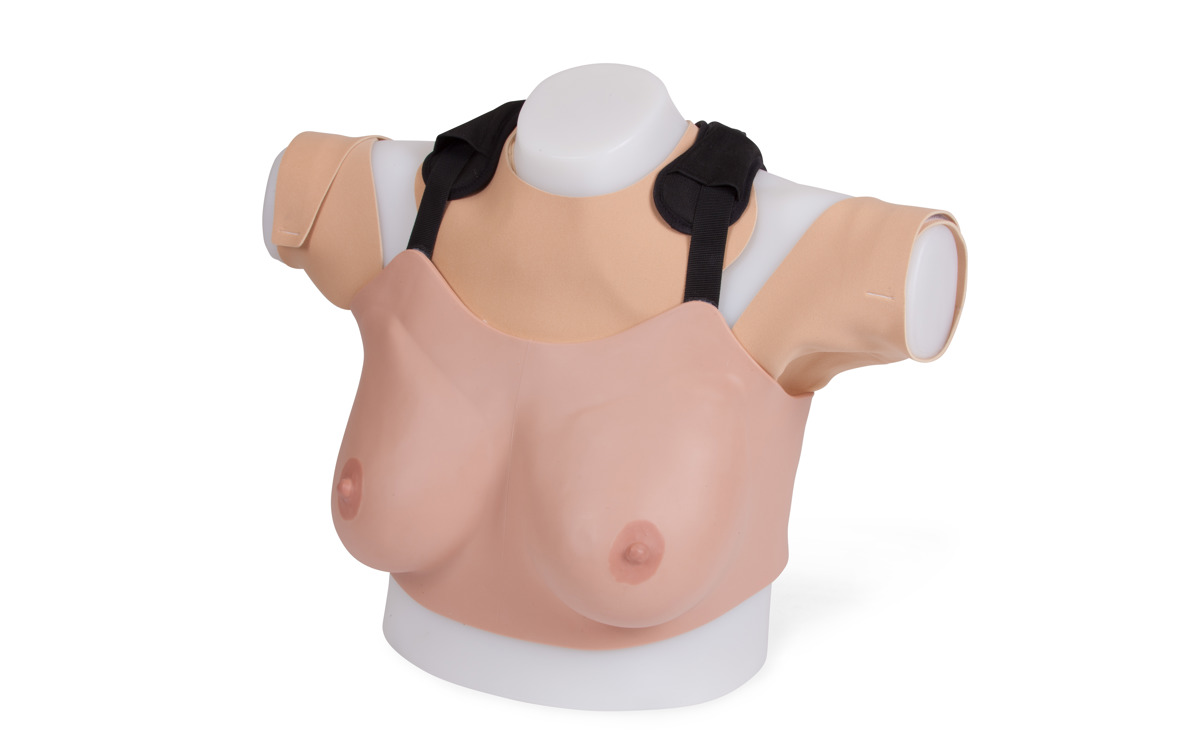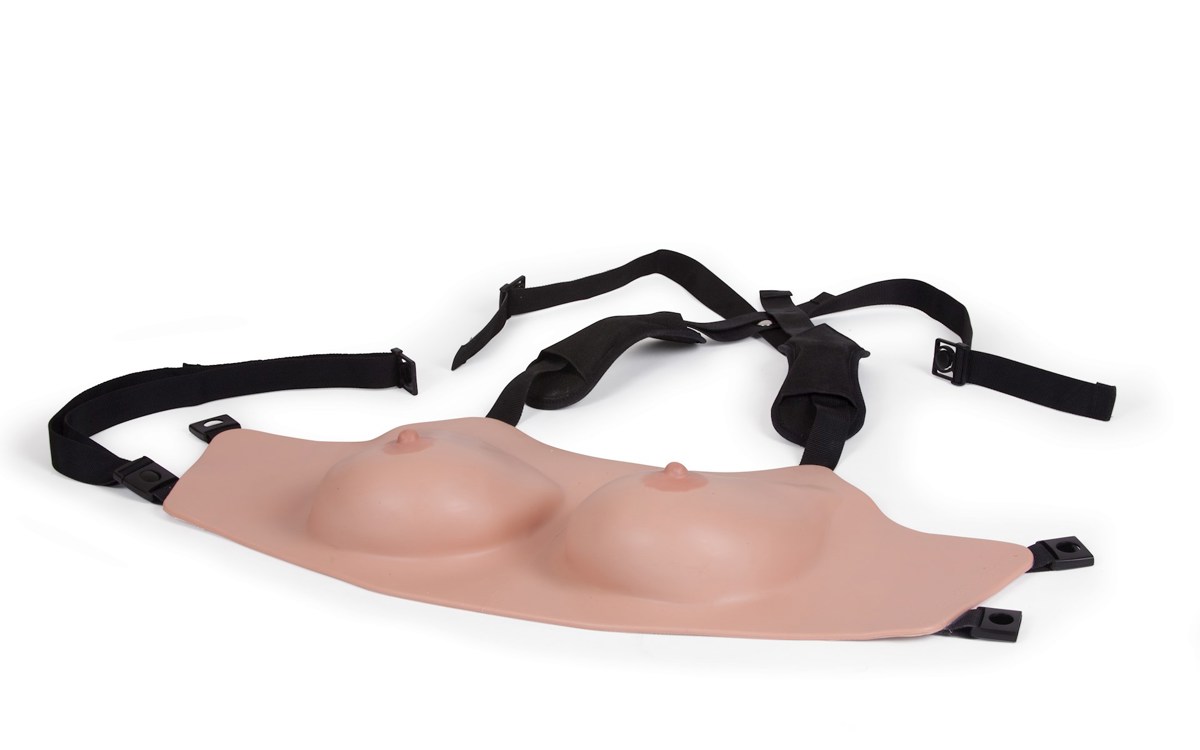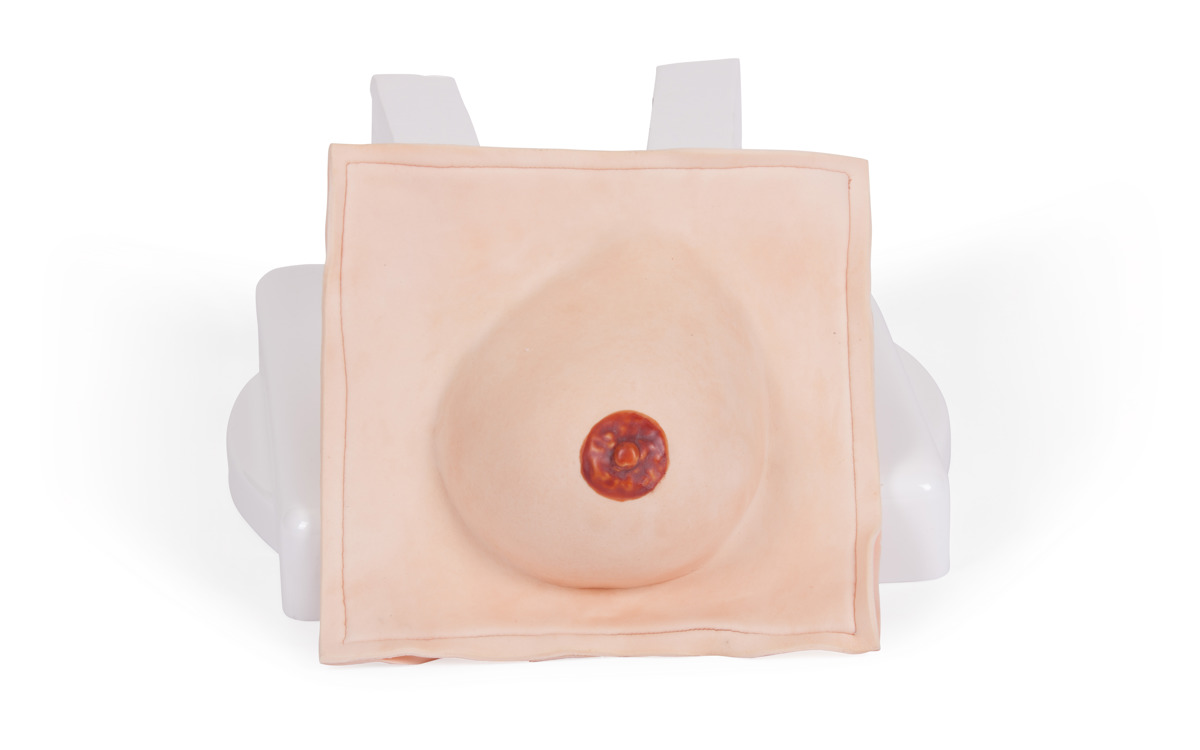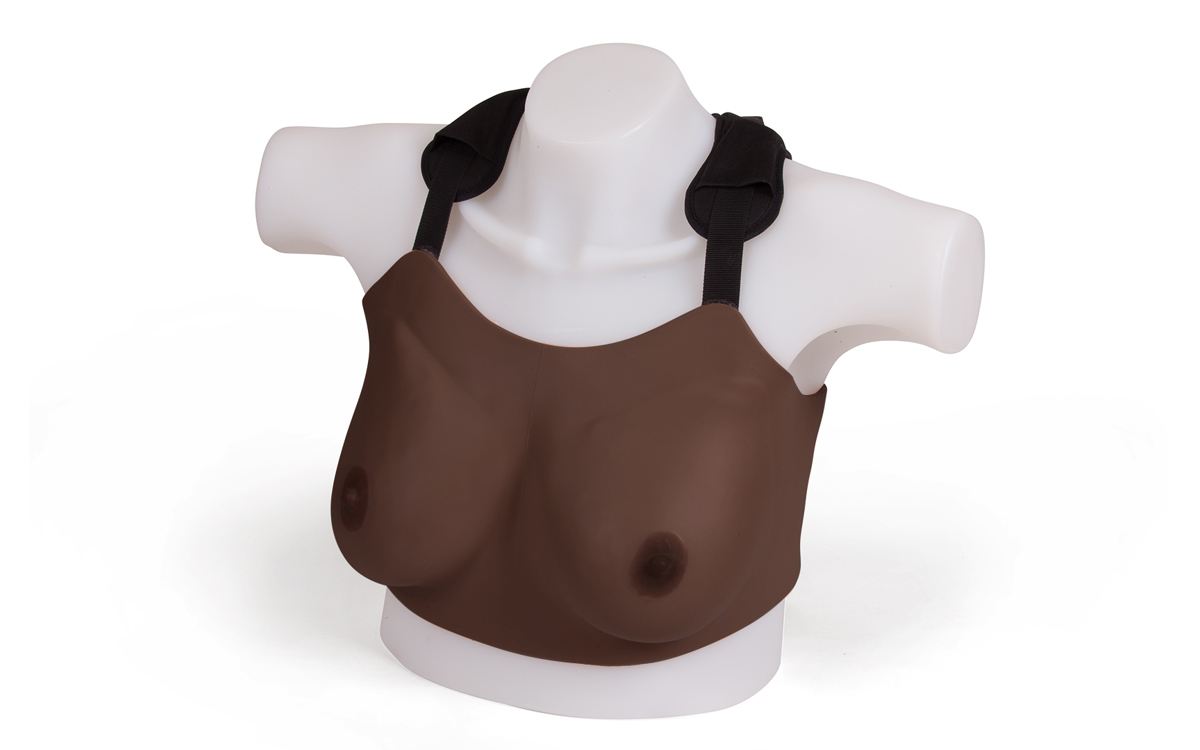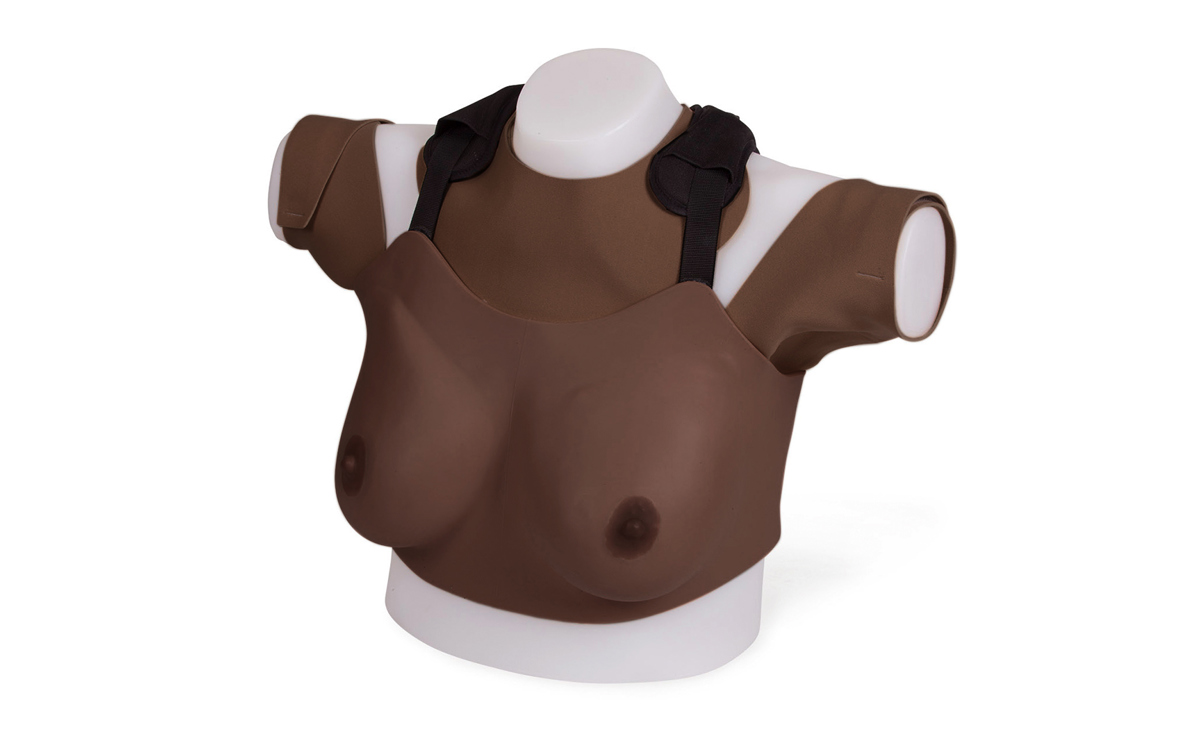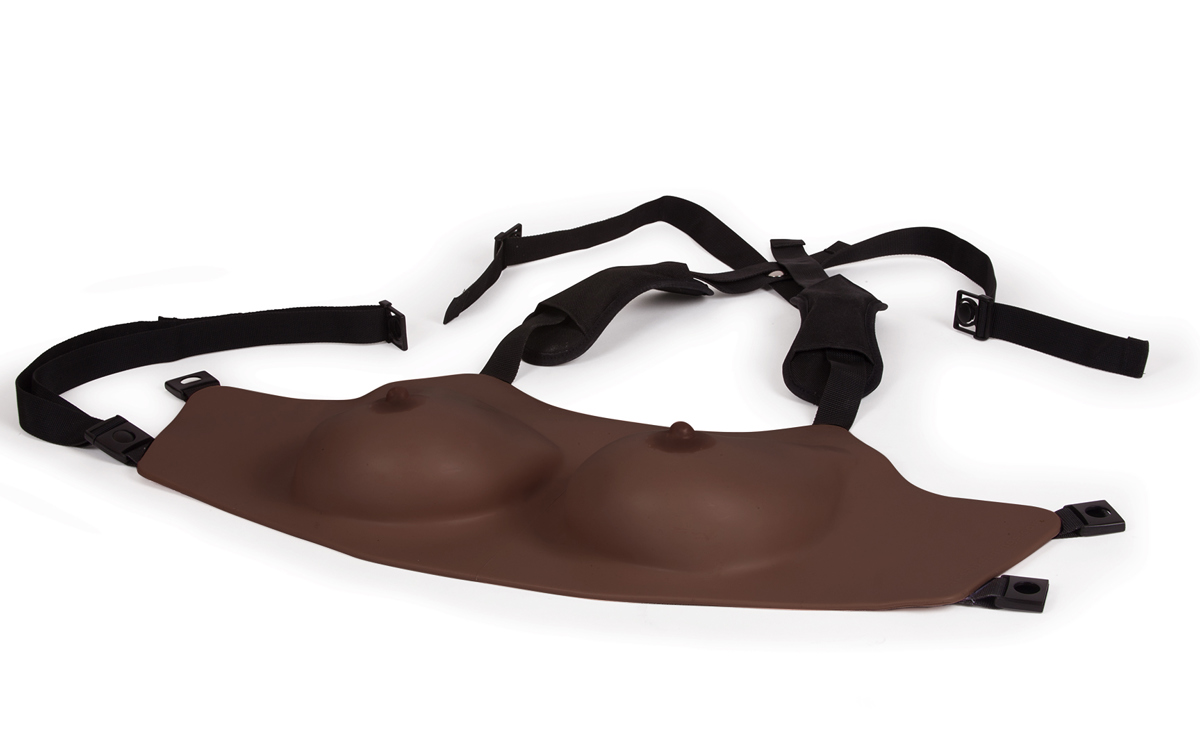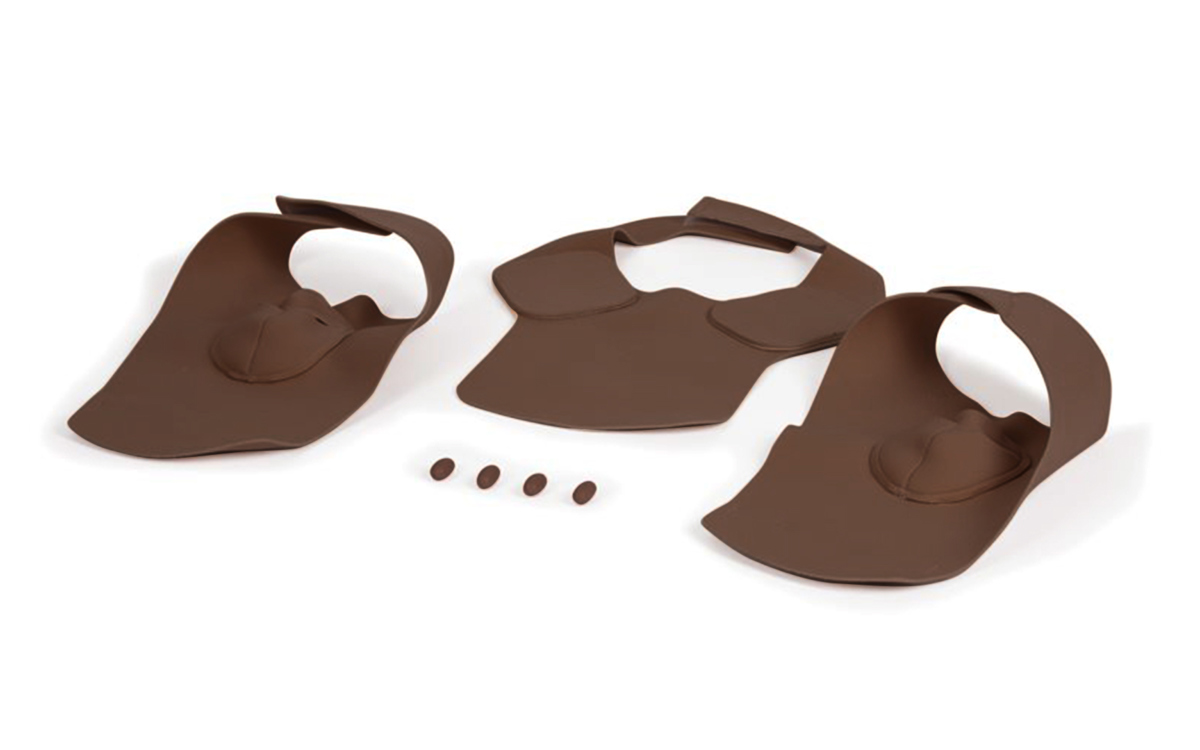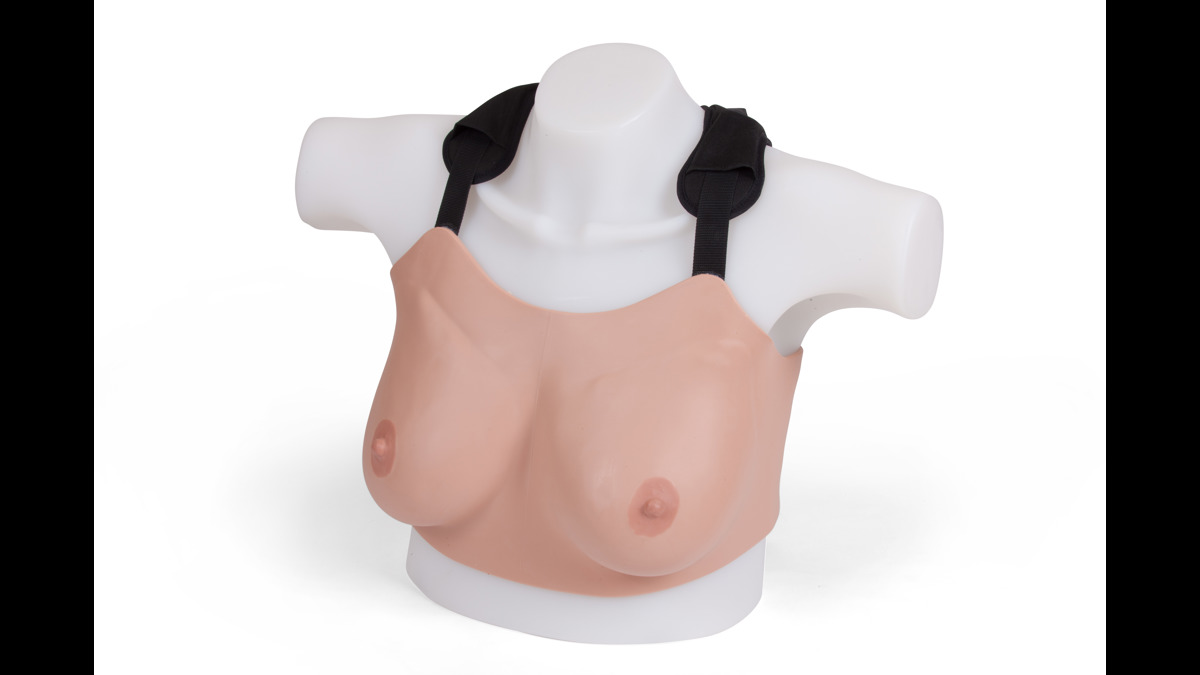

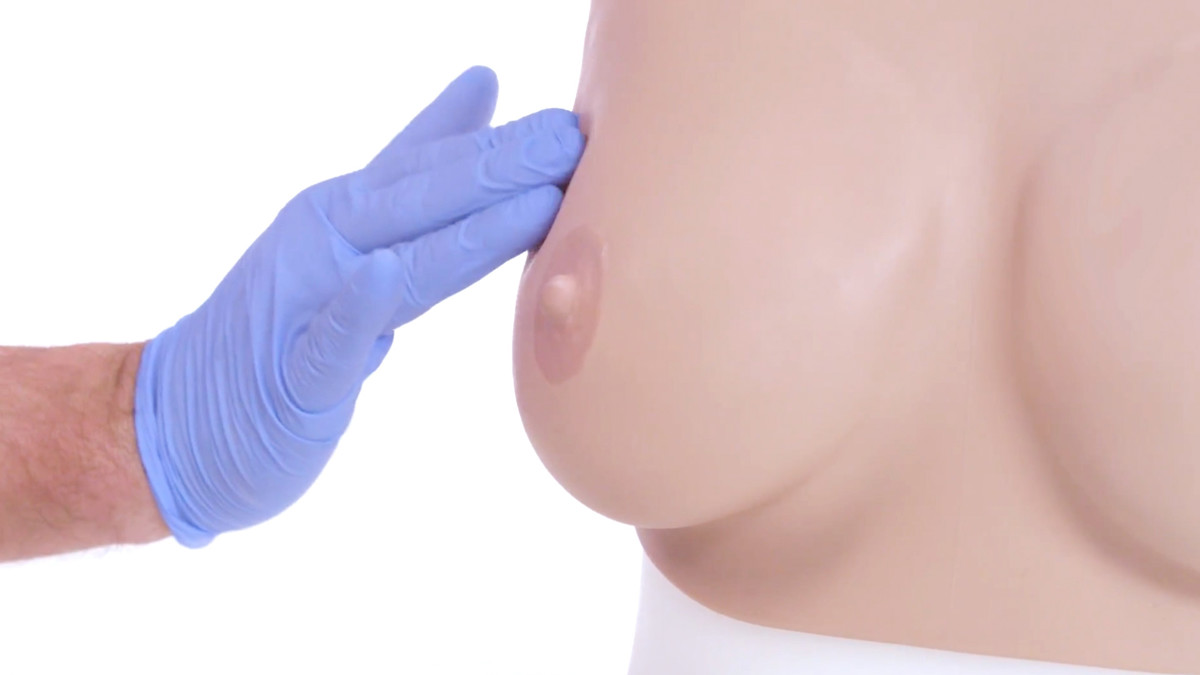
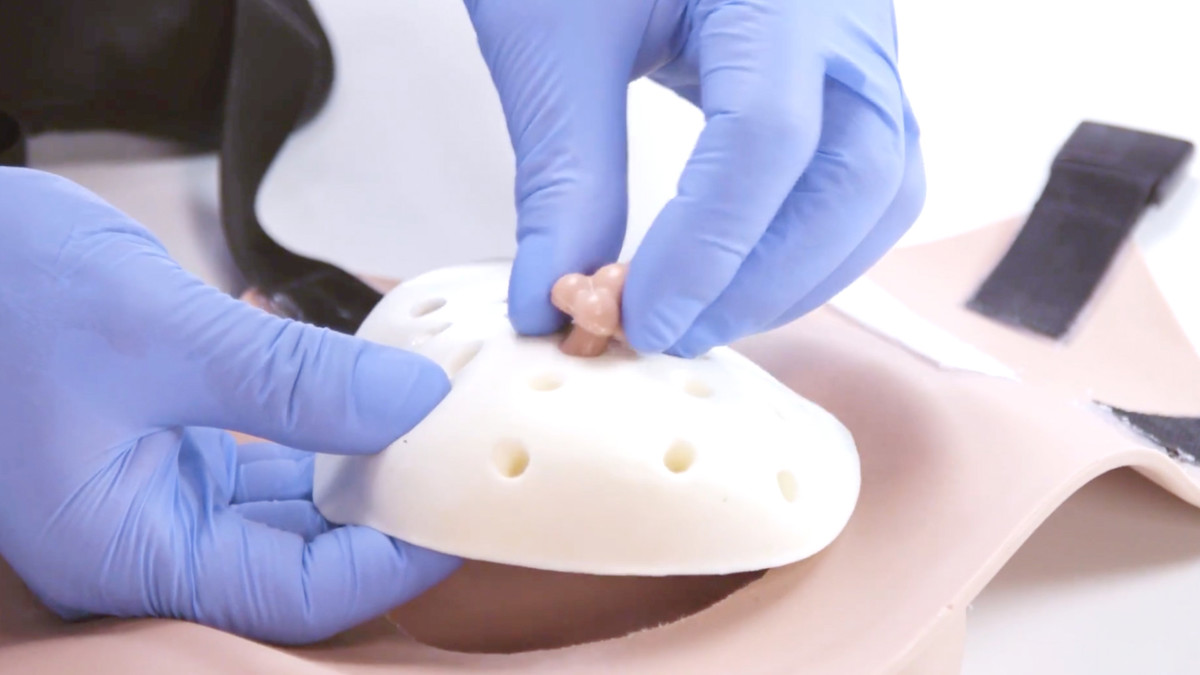
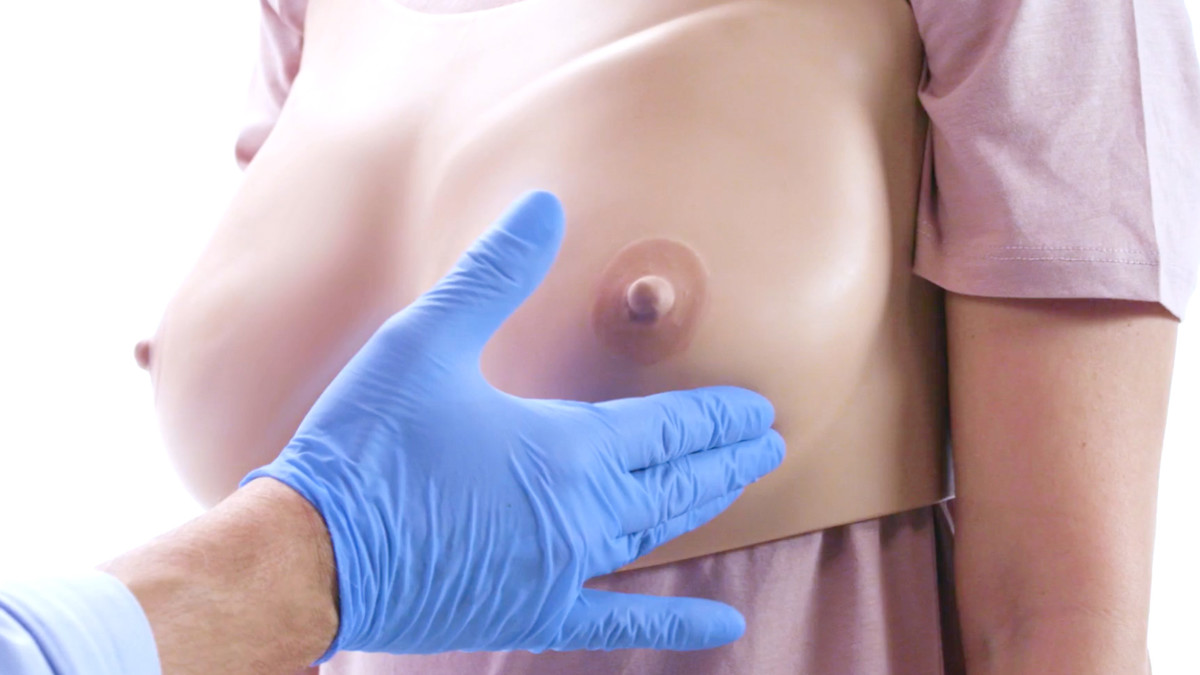
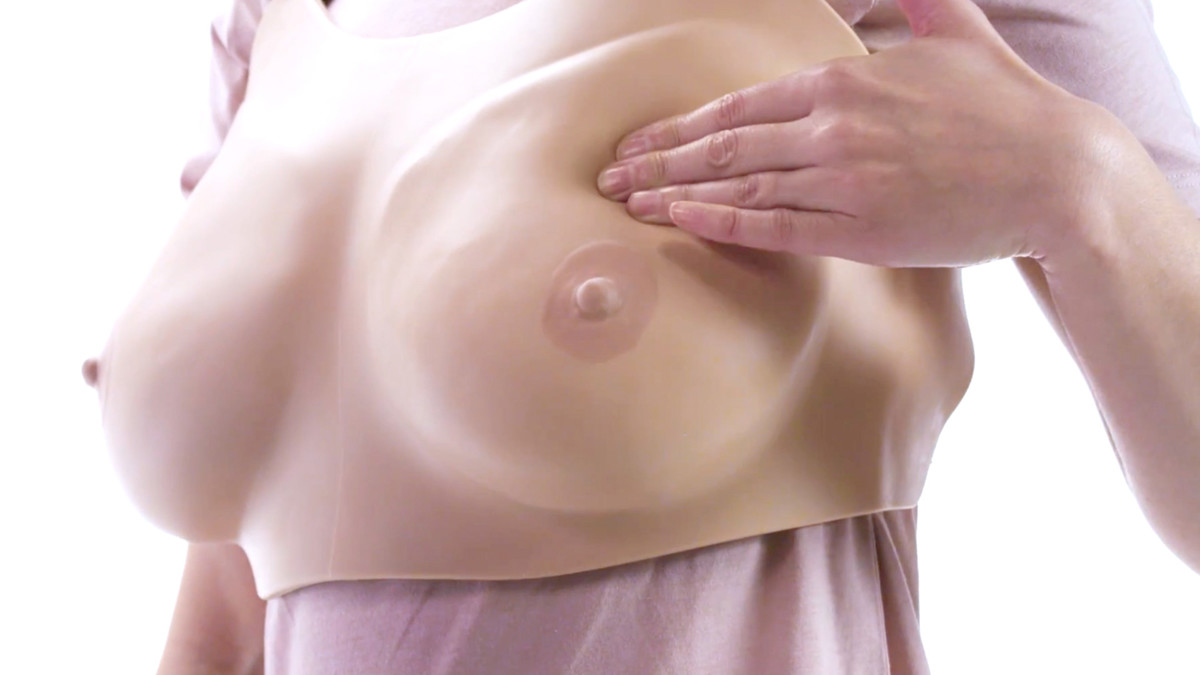
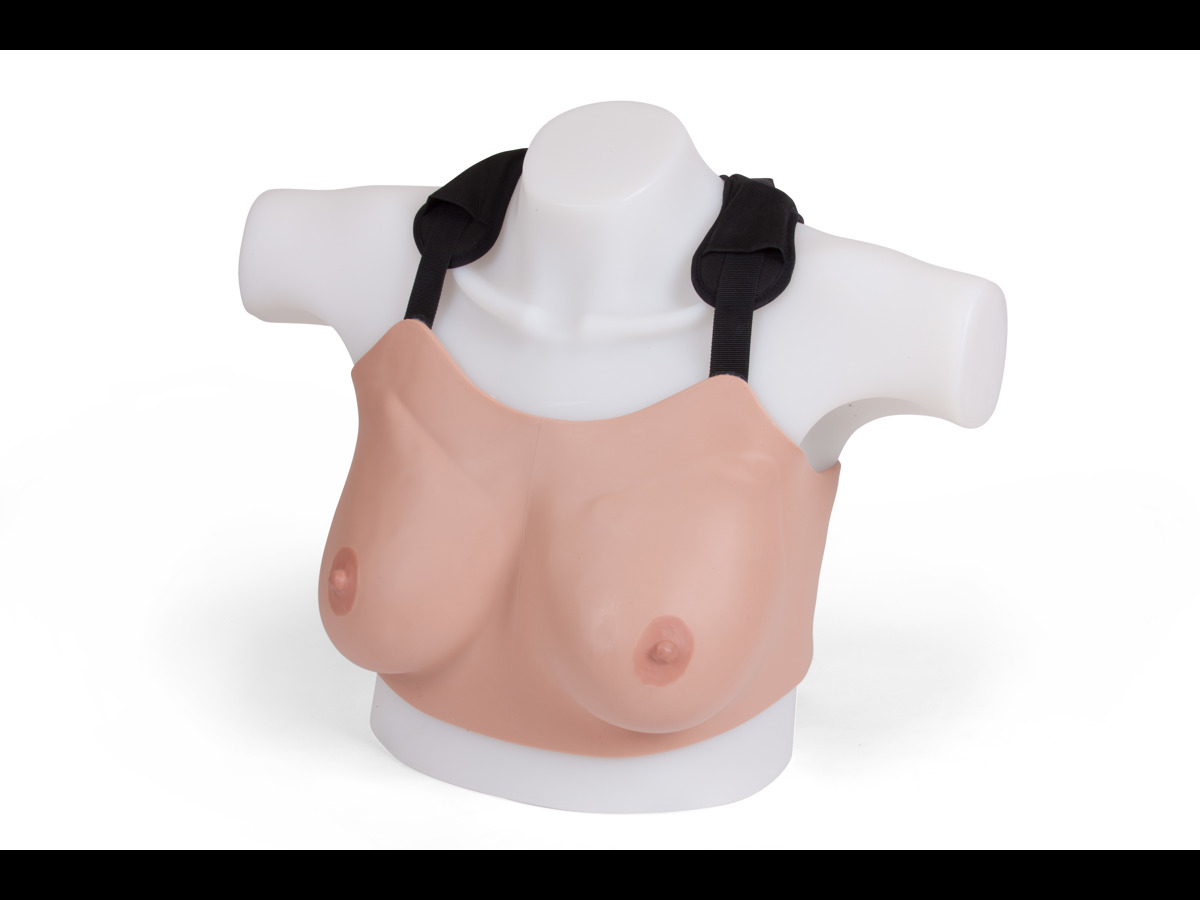
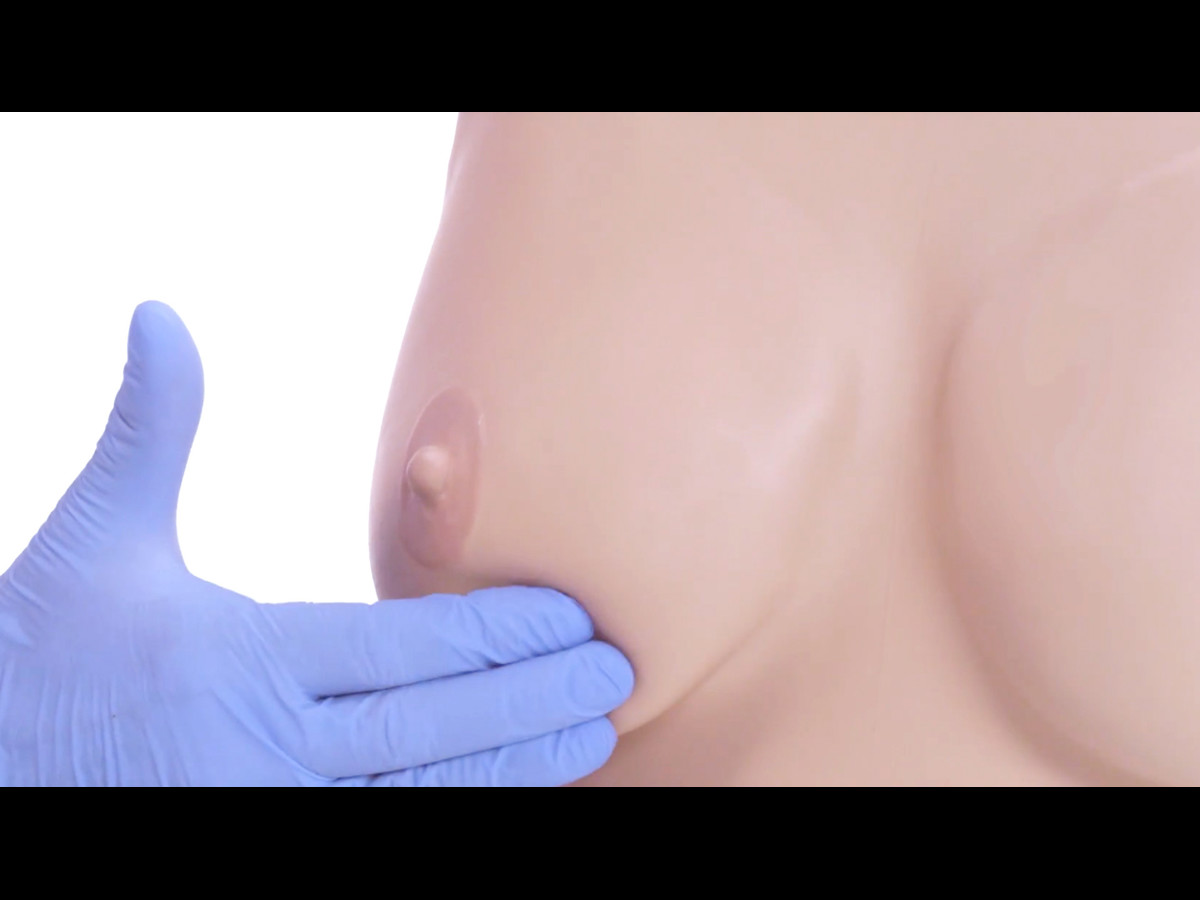

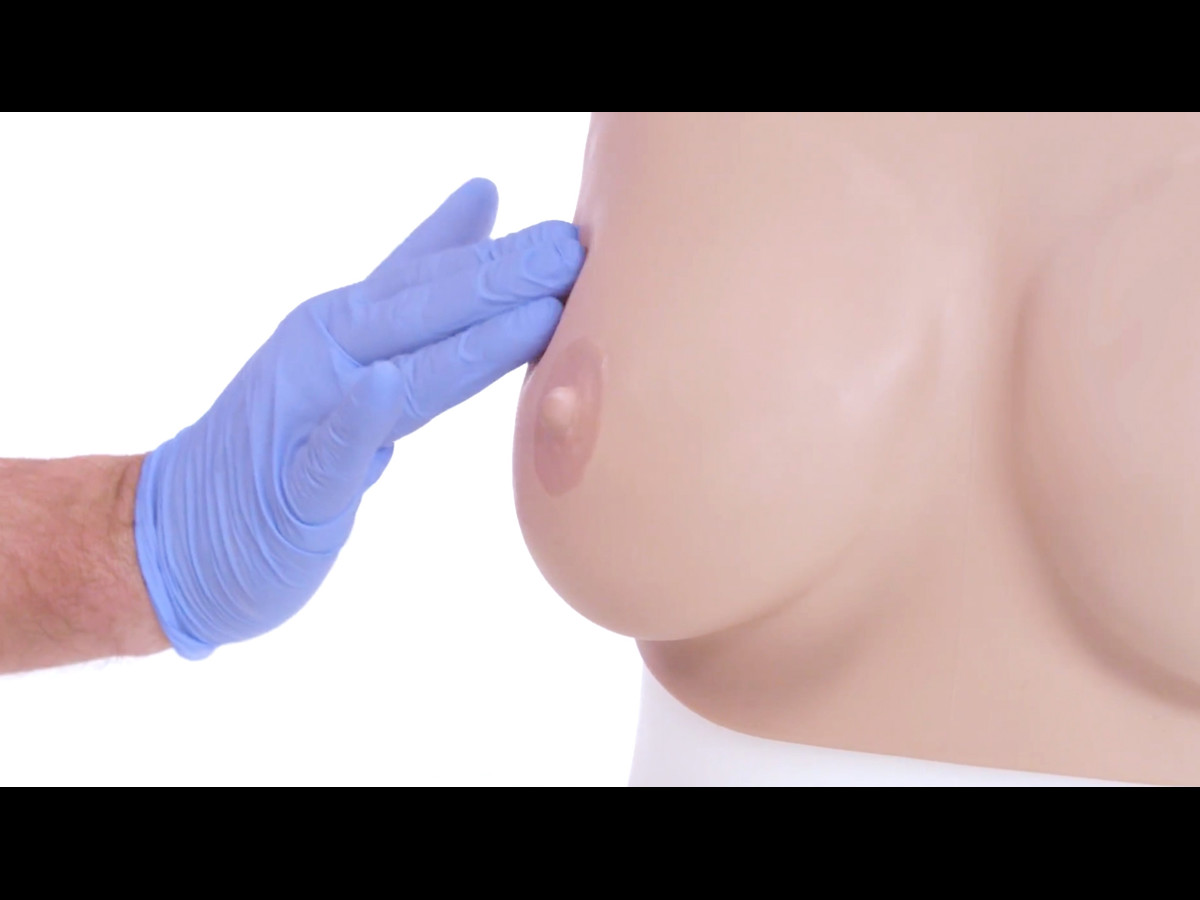
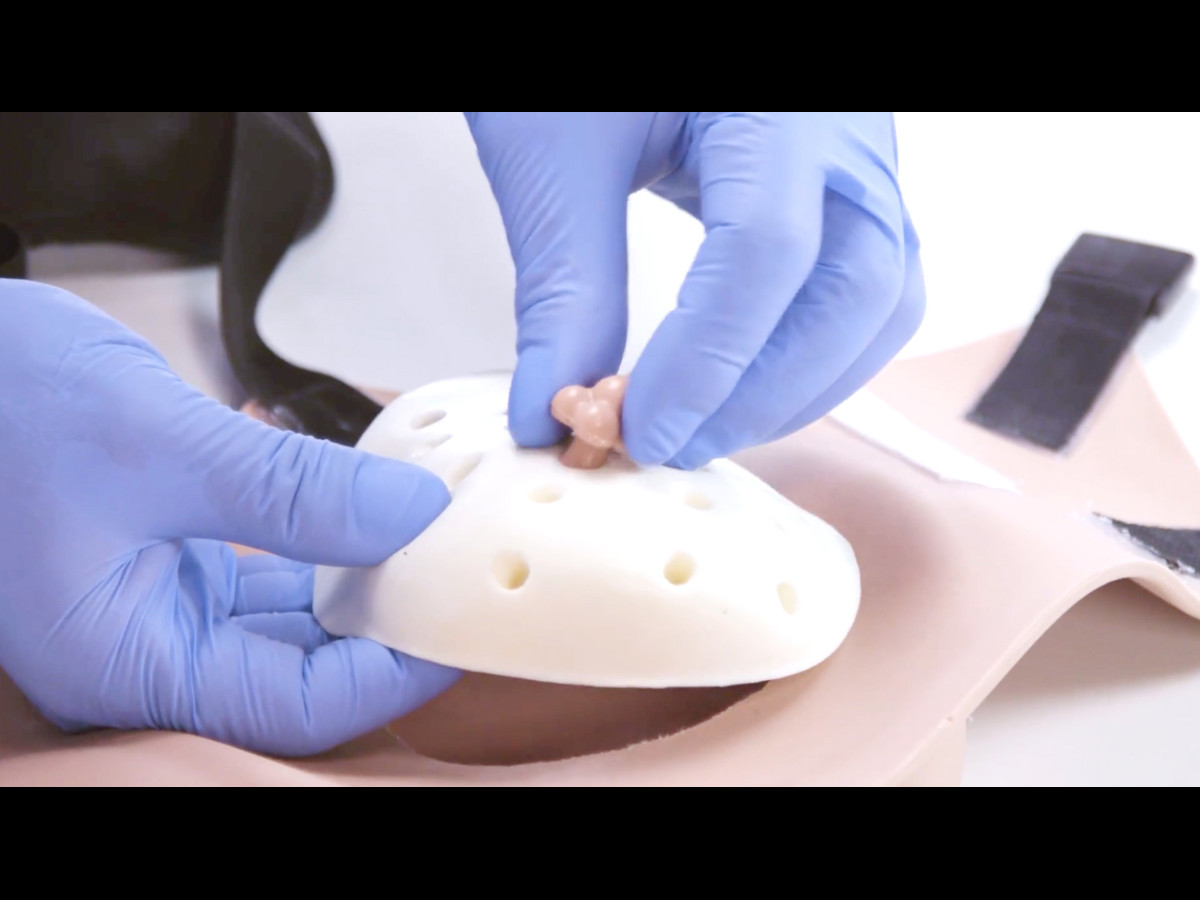
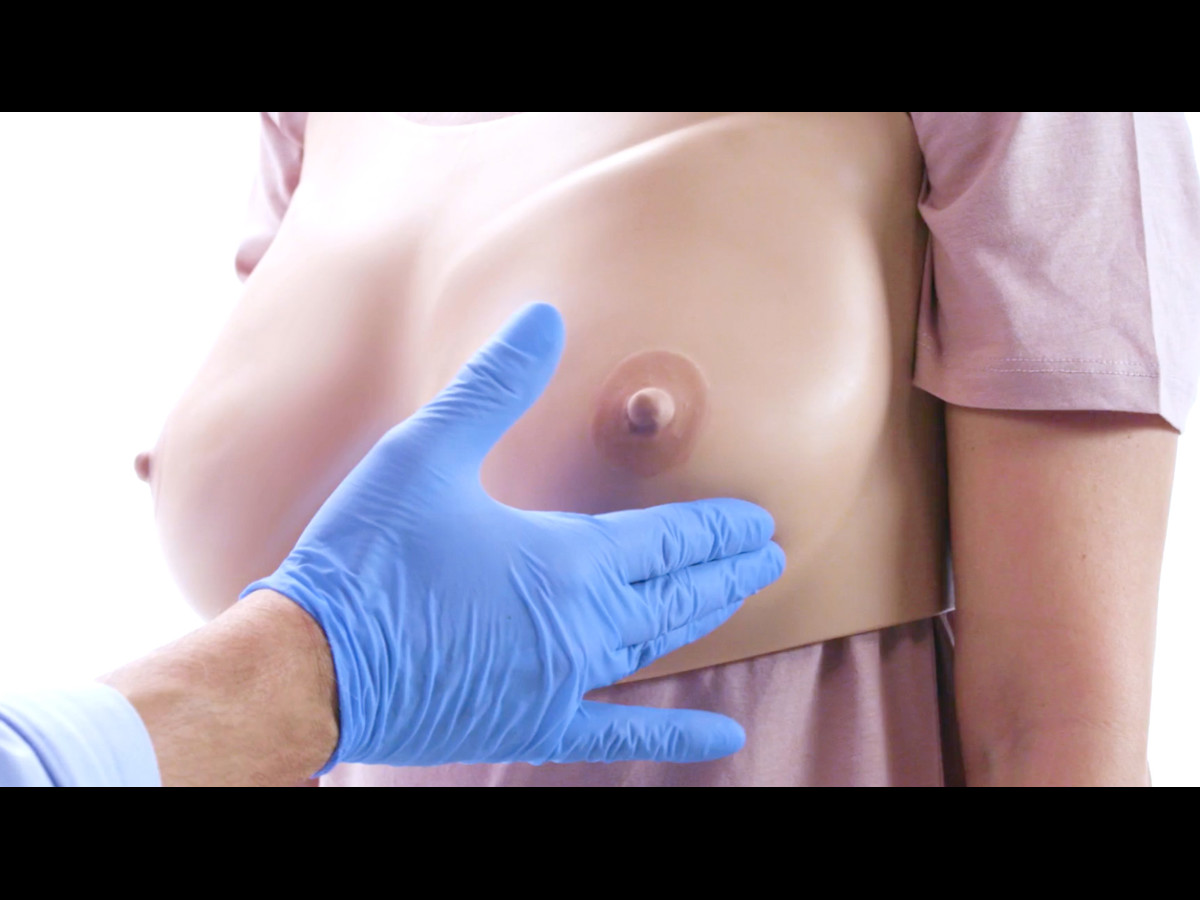
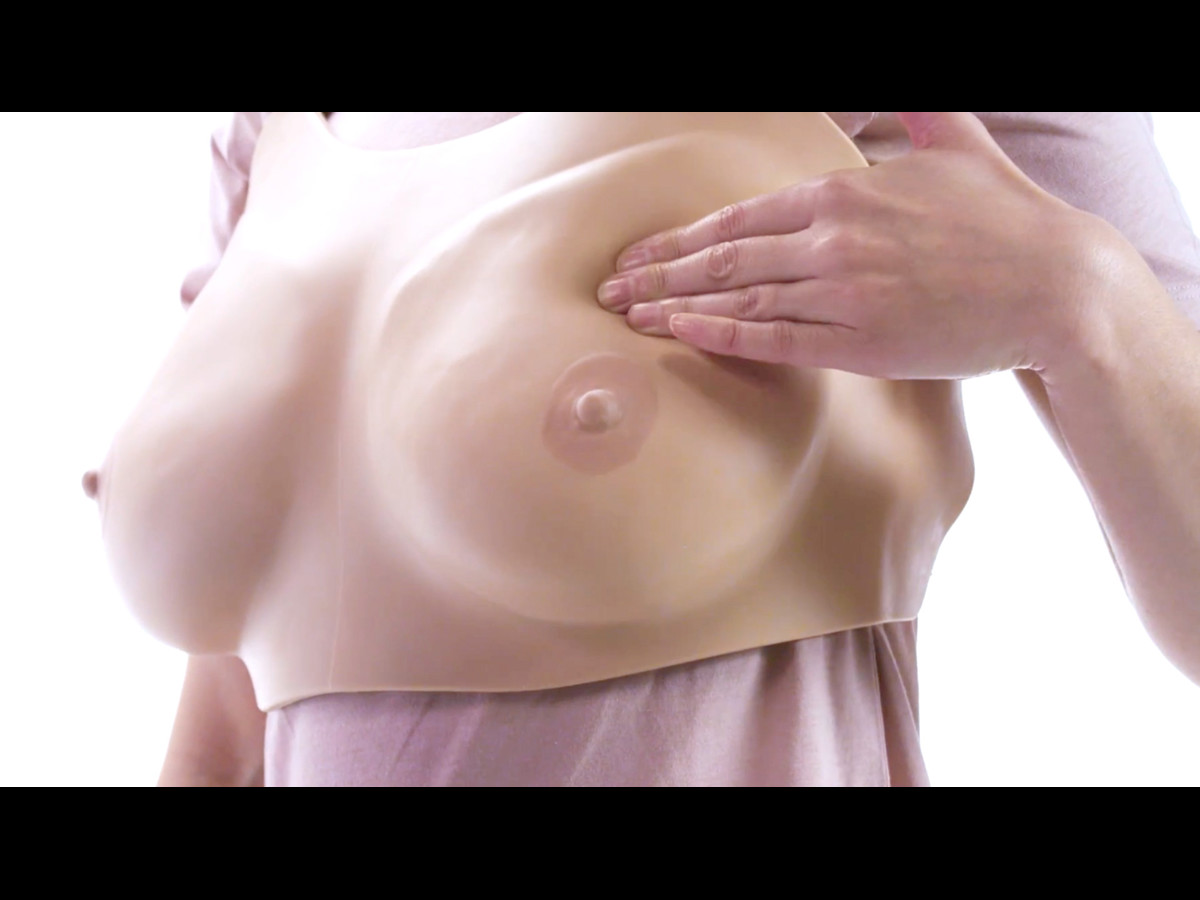
Vår modell för standardundersökningar ger en realistisk läroplattform för att få de kunskaper som krävs för att utföra klinisk bröstundersökning.
Innehåller 6 utbytbara patologier som kan positioneras på en mängd olika ställen. Ger sjukvårdspersonal verktygen för att identifiera olika komplikationer och patologier såsom karcinom, cystor, fibrocystisk bröstsjukdom samt fibroadenom.
Kan användas både med simulerad patient eller separat och lämpar sig för grundutbildningar där kliniska undersökningar utförs. Den lämpar sig även för sjukvårdspersonal för att förmedla bästa praxis till praktikanter och patienter.
Denna produkt har tagits fram i nära samarbete med flera ledande kliniker: Peter Donnelly, Torbay Hospital, UK; Clinical Skills Resource Centre, University of Liverpool, UK; Clinical Practice Centre, St James’s University Hospital, Leeds, UK
Overview
- Kan användas både med simulerad patient eller separat
- Vid separat användning finns en torso att använda som bas
Realism
- Mjukvävnad som känns och ser realistisk ut
- Klavikulära och axillära dynor för exakt placering av lymfkörtlar
Versatility
- Patologierna kan placeras på olika förutbestämda platser och är enkla att byta ut
- Bekväm att ha på sig en längre tid under undersökningar och bedömningar
Cleaning
- Huden kan tvättas med tvål och vatten
Safety
- Latexfri
Simulated Patient
- Wearable breast component can be used with a simulated patient, strap fastenings can be adjusted to the wearer
Anatomy
- Realistisk mjukvävnad och bröstanatomi
- Flera patologier ingår:
- Karcinom (2, 3 och 5 cm)
- Cysta
- Fibrocystisk sjukdom
- Fibroadenom
Skills Gained
- Klinisk bröstundersökning
- Självundersökning
- Identifiering av anatomiska landmärken
- Identifiering av lymfkörtlar (axillära, supra- och infraklavikulära)
- Lokalisering och diagnosering av patologier
- Kommunikation mellan läkare och patient
Jämförelse |
Produktnr. |
||
|---|---|---|---|
| Färdigheter | 40200 | 40201 | 40202 |
| Klinisk bröstundersökning | Yes | Yes | Yes |
| Självundersökning | Yes | Yes | Yes |
| Identifiering av anatomiska landmärken | Yes | Yes | Yes |
| Identifiering av lymfkörtlar (axillära, supra- och infraklavikulära) | Yes | Yes | Yes |
| Lokalisering och diagnosering av patologier | Yes | Yes | Yes |
| Kommunikation mellan läkare och patient | Yes | Yes | Yes |
Product Contains
Jämförelse |
Produktnr. |
|||
|---|---|---|---|---|
| Vad ingår | 40200 | 40202 | 40201 | |
| - | Bröst för påtagning vid undersökning | Yes | Yes | Yes |
| 40203 | Lymfkörteldynor + lymfkörtlar | No | No | Yes |
| 40204 | Patologier | Yes | Yes | Yes |
| 40205 | Bröstundersökning insatser | Yes | Yes | Yes |
| 40206 | Bröstpatologier stöd | Yes | Yes | Yes |
| 40207 | Bröst baksidor | Yes | Yes | Yes |
| - | Torso för bröstundersökning | Yes | No | Yes |
Works with the following products:
References
AAFP Recommended Curriculum Guidelines for Family Medicine Residents Reprint No. 282, 2016 Women’s Health and Gynecologic Care p.7 9. Breast health a. Anatomy and physiology of benign diseases of the breast (including cysts, adenomas, and fibrocystic changes through the menstrual cycle) b. Evaluation and management of breast disease... d. Evidence-based recommendations ... clinical breast examination (CBE), breast self-examination (BSE)
CPMEC Australian Curriculm Framework for Junior Doctors v 3.1, 2012, p.7: History and Examination: Performs a comprehensive examination of all systems; Elicits symptoms & signs relevant to the presenting problem or condition. Discriminates between the possible differential diagnoses relevant to a patient's presenting problems or conditions
RACGP Curriculum for Australian General Practice 2016, CS16 Core Skills unit, p.23 CS2.2.2.2a Demonstrate appropriate and respectful physical examination technique CS2.2.2.5a Identify situations where physical examination findings are inconsistent with history CS2.2.2.2b Effectively utilise appropriate clinical tools to optimise examination CS2.2.2.3b Effectively summarise key examination findings for the patient
CPMEC Australian Curriculm Framework for Junior Doctors v 3.1, 2012, p.7: History and Examination: Performs a comprehensive examination of all systems; Elicits symptoms & signs relevant to the presenting problem or condition. Discriminates between the possible differential diagnoses relevant to a patient's presenting problems or conditions
RANZCOG Curriculum, 3rd Ed. (2015) p.49 B.1.2 Antenatal care Assess and manage common clinical problems that arise in pregnancy ...Breast pain, breast lump
Competence and Curriculum Framework for the Physician Assistant 2012, p 12 and 23 2.3.5 ...Perform a physical examination tailored to the needs of the patient and the demands of the clinical situation, including ...breast examination ...The Physician Assistant should be familiar with the following patient presentations and should be able to manage and diagnose / refer appropriately: ...Breast problems (lump, pain, discharge, surface changes)
Specialty Training Curriculum for Core Medical Training, 2013 p. 117: Oncology Common cancers (presentation, diagnosis, staging, treatment principles): ...breast.
The UK Foundation Programme Curriculum 2016. p.9: obtains history, performs clinical examination, formulates differential diagnosis and management plan (FPC 11)
The Intercollegiate Surgical Curriculum - General Surgery, 2016, p.32 12.5.2 Manage patients presenting with any breast condition. Competent to assess ... female patients with breast symptoms or signs within the breast diagnostic MDT

